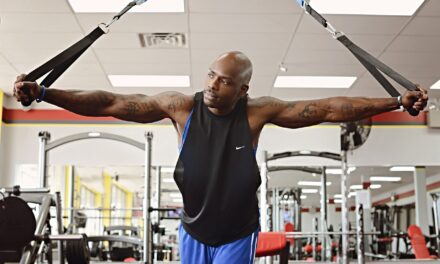Introduction to the Topic
As men cross the 50-year mark, staying physically active becomes more important than ever. Exercise for over 50 males isn’t just about maintaining a trim waistline; it’s about preserving muscle mass, boosting mental health, and reducing the risk of chronic diseases. However, the approach to exercise at this age is quite different from that in the earlier years. It’s no longer about lifting the heaviest weights or running the fastest marathons. Instead, the focus shifts towards sustainability, functionality, and overall well-being.
Understanding the changes your body goes through post-50 is crucial. You might notice that muscles aren’t as resilient as they used to be, joints might be a bit creakier, and recovery from workouts takes longer. But these shouldn’t be reasons to slow down. In fact, with the right exercise plan, men over 50 can experience a renaissance of their physical fitness, finding strength and vitality that rivals their younger selves.
One of the key aspects of exercising over 50 is balancing cardiovascular workouts, strength training, flexibility exercises, and balance training. Each component plays a crucial role in ensuring a holistic approach to fitness, addressing everything from heart health to bone density and mental acuity.
Let’s delve deeper into the types of exercises that are not only safe but highly beneficial for men over 50.
In-Depth Explanations about the Topic
Understanding the Aging Body
Before jumping into specific exercises, it’s important to understand how the body changes after 50. Muscle mass naturally decreases, a process known as sarcopenia, and the risk of chronic conditions like osteoporosis and arthritis increases. Additionally, metabolism slows down, making weight management more challenging. But with regular physical activity, many of these effects can be mitigated.
Cardiovascular Health
Cardiovascular exercise is crucial for maintaining heart health and managing weight. Low-impact activities such as brisk walking, swimming, or cycling are excellent choices. They increase heart rate and endurance without putting too much strain on the joints. Aim for at least 150 minutes of moderate-intensity aerobic activity per week, as recommended by health experts.
Strength Training
Strength training is essential for preserving and increasing muscle mass, which dwindles with age. It also strengthens bones, reduces the risk of osteoporosis, and improves balance. Resistance training with weights, resistance bands, or body-weight exercises like push-ups and squats should be incorporated at least two days a week. Start with lighter weights and gradually increase as strength builds.
Flexibility and Balance
Flexibility exercises help maintain joint range of motion, and balance training reduces the risk of falls, a major concern for men over 50. Yoga and Tai Chi are excellent for both flexibility and balance, offering the added benefit of stress reduction and mental calmness.
Customizing Your Routine
Your workout routine should be tailored to your individual health status and fitness level. Consult with a healthcare provider or a fitness professional to design a program that’s right for you, especially if you have any existing health conditions.
Consistency and Recovery
Consistency is key in maintaining fitness over 50. However, recovery should not be overlooked. Older muscles need more time to recover, so ensure you’re not overtraining and are getting adequate rest between workouts. Nutrition also plays a significant role in recovery, so focus on a balanced diet rich in protein, healthy fats, and carbohydrates.
Overcoming Challenges and Staying Motivated
Starting an exercise routine can be daunting, especially if you’re new to it or returning after a long break. Set realistic goals, track your progress, and don’t be too hard on yourself. Finding a workout buddy or joining a group can also help keep you accountable and motivated.
Summary and Takeaways
Key Takeaways for a Successful Fitness Journey
Embarking on a fitness journey post-50 can be both a rewarding and transformative experience. It’s crucial to remember a few key takeaways:
- Start Slowly and Build Up Gradually: Don’t rush into intense workouts. Begin with low-impact exercises and slowly increase intensity.
- Balance Different Types of Exercise: A combination of cardiovascular, strength, flexibility, and balance exercises will yield the best results.
- Listen to Your Body: Be mindful of how your body responds to different exercises and adjust accordingly. Prioritize rest and recovery.
- Seek Professional Advice: Consulting with fitness and healthcare professionals can provide you with a tailored and safe workout plan.
- Stay Consistent: Regular exercise is key, but don’t get discouraged by minor setbacks. Consistency over time leads to significant health benefits.
- Embrace a Healthy Lifestyle: Combine your exercise routine with a balanced diet and adequate sleep for overall health and wellness.
- Enjoy the Process: Find activities that you enjoy and celebrate your progress, no matter how small.
Conclusion
While embarking on a fitness journey after 50 might seem challenging, it’s a powerful step towards improving your quality of life. Regular exercise can significantly enhance physical and mental health, helping you age gracefully and actively. Remember, it’s never too late to start, and the benefits of exercise at this stage of life are invaluable. Stay committed, stay motivated, and enjoy the journey towards a healthier, fitter you.






